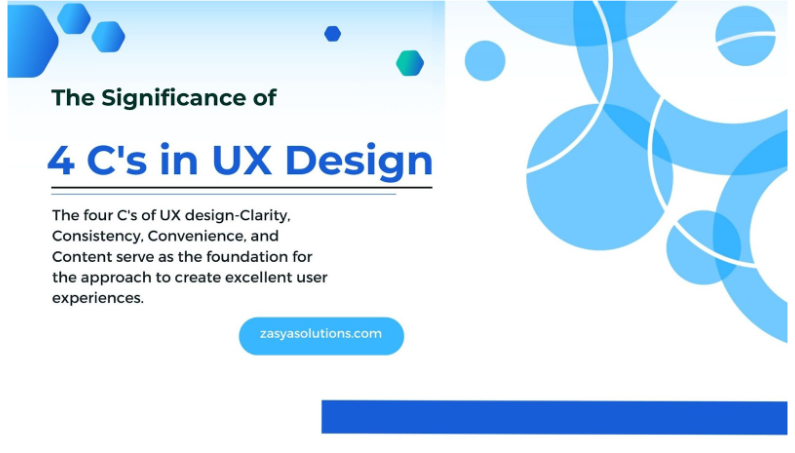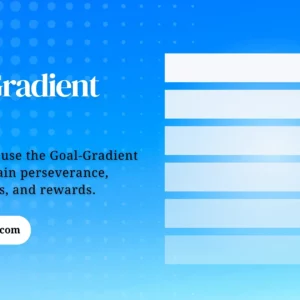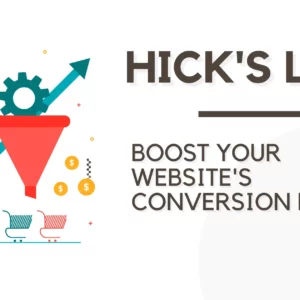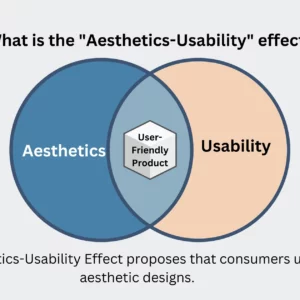User Experience Design is a component of website and app development. It strives to design visually beautiful interfaces that are user-friendly and efficient. UX comprises a user’s complete path while dealing with a digital product. It emphasizes factors such as usability, accessibility, and experience.
Providing an outstanding user experience in web and app development is paramount. Users have high expectations, and a pleasant UX may be the difference between a successful product and one that fails to get momentum. A smooth and pleasurable experience keeps consumers engaged and motivates them to return. It can suggest the product to others and add to the business’s success.
A well-known web development company significantly emphasizes the 4 C’s in UX design. These are Clarity, Consistency, Convenience, and Content. These principles are the foundation for their approach to creating excellent user experiences.

Importance of Clarity in User Experience:
Clarity is the bedrock of successful User Experience (UX) design for a web development company. Clarity means simplicity, transparency, and ease of understanding for the users. It is about creating interfaces that leave no room for ambiguity or doubt. Hence, users navigate digital experiences.
A successful UX strategy must include straightforward navigation, messaging, and aesthetic design. Clear navigation makes it easier for customers to traverse a website or app. It reduces frustration and increases the user experience. Concise and well-structured messaging ensures a clear presentation of the information. A straightforward visual design employs consistent layouts, color schemes, and typeface. Using these factors makes information aesthetically appealing and understandable. You will get increased user engagement and comprehension.
Google’s search engine, Airbnb, and Duolingo are real-world examples that use clarity in their interface. Google’s search engine has a minimalistic and uncluttered interface. In Airbnb, the simple booking process is used. In Duolingo, the use of gamification has made it engaging and user-friendly. These examples show clarity is essential in building a strong, user-centered digital experience.
Website Design Consistency:
Consistency is an essential component in the world of UX design. Consistent design means using design components and concepts throughout a digital interface. It ensures that the layout, color palettes, typography, and button placements adhere to a unified and harmonious design language. Consistency is the linchpin that unites the many components of a user’s interaction with a website or application. Hence, you will get a seamless and predictable user experience.
There are various benefits of using consistent design elements in UX by a web development company. They improve user comprehension by providing a predictable and familiar environment. When users see familiar patterns and visual cues frequently, it becomes easier for them to navigate and interact. This consistency decreases cognitive strain. Users concentrate on their tasks rather than dealing with unfamiliar or disjointed designs. Consistency encourages confidence and trustworthiness.
Several businesses and corporations have offered an unwavering commitment to consistent UX design. Apple is a prominent example. It offers seamless and intuitive user interfaces across hardware and software. Google delivers a consistent experience with comparable design elements throughout its applications and services. Likewise, Facebook, now Meta, has carried its design language across several platforms. It improves familiarity and ease of use for its billions of users. These companies show how consistency helps user comprehension and increases brand identity.
Convenience Is Key:
Convenience refers to the fundamental need to make user interactions with digital interfaces as efficient and painless as feasible in UX design. It requires anticipating and understanding user demands and then seamlessly building interfaces to meet those needs. A user-friendly UX ensures that tasks are accomplished in the fewest steps feasible, reducing friction and frustration.
User-centric design is essential for streamlining procedures and interactions for simplicity of use. This technique implies empathy with the user’s objectives, habits, and pain points and puts them at the center of the design process. A web development company may create interfaces that match users’ expectations and habits by gathering user insights and feedback, ultimately making their experiences more convenient and satisfying.
One-click purchasing on e-commerce websites, autocomplete recommendations in search bars, and mobile applications that remember user preferences are all convenience-oriented features or interfaces. These features simplify interactions, save time, and enhance the user experience.
Content in Design:
A successful user experience relies on engaging and relevant information. In this context, content encompasses text, photographs, videos, and interactive elements. It is necessary for transmitting information, eliciting emotions, and guiding individuals on their travels.
Content has an enormous impact on user retention. Well-crafted content may entice customers, keep them on a website or app for prolonged periods, and entice them to return. In contrast, disorganized or unconnected content may irritate and drive away customers. The relevance and quality of content directly impact a user’s perception of a platform and its worth.
Platforms such as Netflix and Khan Academy are examples of content-driven UX success stories. These examples show how enticing content may keep users and encourage conversions and user loyalty.
The Intersection of the 4 C’s in UX Design:
The 4 C’s of UX design—clarity, consistency, convenience, and content—are interrelated and reinforcing concepts. Clarity guarantees that the material is understood. The consistency ensures that the experience is consistent. Convenience simplifies interactions, allowing consumers to access and interact with material quickly.
Achieving a successful UX design for a web development company frequently entails striking a balance between these ideas. For example, a simple and consistent navigation menu improves convenience by making it easier for users to discover content. These concepts must be balanced to provide a comprehensive and user-centric experience.
Harmony among the 4 C’s of UX design necessitates careful planning and a thorough grasp of user requirements. Designers should stress clarity to ensure material is easily understandable, consistency to reinforce the platform’s identity, and ease to streamline user interactions. The appropriate balance can result in more exciting and fulfilling user experiences.
Benefits of 4 C’s in UX Design:
Prioritizing the 4 C’s in UX design has various advantages. Clarity eliminates misunderstanding, which leads to increased user understanding and less irritation. Consistency fosters trust and improves brand identification. Convenience saves users time and effort, which increases pleasure. Valuable content engages consumers and keeps them coming back for more. In return, you will get higher user engagement, conversion rates, and brand loyalty.
These advantages add up to a more prosperous digital product or service. It encourages excellent user experiences and drives corporate success. A user-centric strategy incorporating the four C’s can result in greater customer satisfaction, decreased bounce rates, enhanced customer loyalty, and improved conversion rates.
Challenges in Implementing the 4 C’s:
Implementing the 4 C’s in UX design might be tricky. Designers may confront challenges such as competing design needs, technical limits, and changing user preferences. Balancing clarity, consistency, convenience, and substance may be a complicated and ongoing process.
To overcome these obstacles, designers should do extensive user research, solicit feedback, and prioritize user demands. Testing and iteration are essential for fine-tuning designs. Teamwork between design, development, and content teams is required to guarantee that all components of the 4 C’s are addressed and applied correctly.
Examples of 4 C’s used in UX Design:
A web development company that have effectively used the 4 C’s in UX design include Apple that is noted for its consistent and user-friendly interfaces, and Airbnb, which delivers a convenient and transparent booking experience. Analyzing the impact of these enhancements on their business goals exposes the practical benefits of prioritizing clarity, consistency, simplicity, and content.
For example, Apple’s devotion to consistency has resulted in strong brand loyalty and improved sales. Still, Airbnb’s focus on convenience and content has resulted in more robust user engagement and revenue growth. These case studies show how the 4 C’s in UX design may lead to measurable business results.
Final words:
The 4 C’s in UX design—clarity, consistency, convenience, and content—are fundamental principles that shape user experiences. By emphasizing these concepts, designers may build user-friendly, engaging interfaces that eventually deliver beneficial business outcomes.
I advise designers to incorporate these concepts into their work while keeping in mind their target audience’s specific demands and preferences. User experience design is a constantly dynamic subject, and staying current on industry trends and best practices is critical for continuing success in building excellent digital experiences that satisfy user demands efficiently and effectively. To continue producing excellent experiences in an ever-changing digital market, a web development company must remain agile and open to new methods and processes as technology and user behaviors develop.






